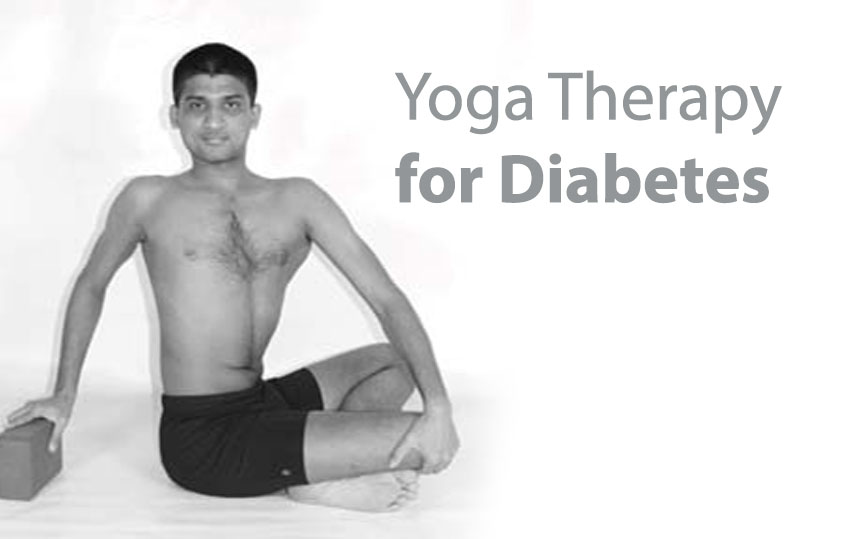Diabetes Mellitus is a group of metabolic diseases, which is characterised by high glucose levels that result from defects in the body’s ability to produce or use insulin. It is a disease afflicting the pancreas and also the liver, the intestine and the muscles. In particular, it leads to deficiency in insulin secretion.
Food is broken down and used by the body for energy in the form of glucose – sugar which enters the bloodstream. Glucose is the source of fuel for the body.
Pancreas produces insulin, which is a hormone to control blood sugar. The main job of insulin is to move glucose from the bloodstream into muscles, fat, liver and the brain cells.
Diabetics have high levels of blood sugar. This is because either the pancreas does not make enough insulin or the muscles, fat and liver cells do not respond to insulin normally. In some case, both problems exist.
Types of Diabetes
Type 1
This normally affects in childhood and many patients are diagnosed during their teens. At this stage, the body makes either little or no insulin at all. Genetics, viruses and autoimmune problems may be the primary causes. Good diet control is needed and daily insulin injection may be required.
Type 2
This is more common than Type 1. Most diabetic cases are under this category. Mostly found in adulthood, there has been an increasing number of patients diagnosed with diabetes. The pancreas does not make enough insulin to keep blood glucose level normal, often because the body does not respond well to insulin. Many may not be aware that they are suffering from Type 2 diabetes, which is primarily driven by either obesity or a lack of exercise.
Gestational Diabetes
This is a high blood glucose that is developed during pregnancy. Women who have gestational diabetes are at high risk of suffering from Type 2 diabetes and cardiovascular disease later in life
Symptoms
Most people may not be aware of suffering from diabetes. The following are some likely symptoms:
· Frequent urination
· Disproportionate thirst
· Intense hunger
· Weight gain
· Unusual weight loss
· Irritability
· Blurred vision
· Increased fatigue
· Numbness in the feet and hands
Early diagnosis and consultation with a medical practitioner can help avoid serious complications.
Yoga can be an effective way to address diabetes.
The major benefits of a Yoga practice include:
· Keeping one healthy and preventing from getting diabetes
· Preventing a person of pre-diabetic from progressing to Type 2 Diabetes
· Helping a diabetic from developing further in to a complicated disease
Diabetes not only affects the organs like pancreas, liver, intestines but may also contribute to mental illnesses. Diseases like hypertension and ischemic heart disease are often accompanied by diabetes. Long term diabetes also affects the heart, the kidney, and virtually every organ. Chronic illness can lead to depression and sometimes low self esteem.
Yoga is a holistic practice. Asana and Pranamaya work together physiologically and psychologically. Yoga helps overcome obstacles on the path of perfect health and self-development.
Yoga can be seen as a rebirth for Diabetics.
· Parivrtta Sukhasana (Twisted Easy Seated Pose)

Sit cross legged. Keep the left hand on the right knee and the right hand on a block. Now press both the palms and lift your diaphragm up straight. With every exhalation, squeeze your abdomen. Stay for five breaths with your focus on the contraction of the abdominal organs. Repeat the same on the other side.
· Paripurna Navasana (Full Boat Pose) Seated firmly on the buttocks.

Now slightly recline back and simultaneously raise the legs up with the toes pointed up. You may also bend your knees to keep your back straight. The hands are stretched on the side of the thighs. Stay for five breaths. This pose strengthens the abdominal muscles and reduces fat around the abdomen.
· Paschimottanasana (West Body Stretch Pose)


Hold your big toes with your hands. Exhale, bend the elbows to the side and extend the spine forward from the pelvis with a straight back. Focus on the abdomen as you suck the naval towards your spine and extend the spine forward. In case your back is humping, keep a bolster on your thighs and lean forward so the bolster presses on the stomach. Stay for about 20-30 seconds in the pose.
· Jathara Parivartanasana (Abdominal Twist)

Lie down on the back with both legs bent. Exhale, turn both legs to the left, with the left hand holding your right thigh or knee and the right hand stretching out at the shoulder level. Stay for five breaths with the focus on the abdominal organs. Repeat the same on the other side.
· Ardha Matsyendrasana (Lord of the Fishes Pose)

Sit with the legs straight in the front. Bend the left knee and cross your right leg over the left thigh. Keep a block under the left buttock and raise your left hand, bend the elbow and press it on the right thigh. Keep the right hand on the block behind. Raise your sternum up straight, levelling both shoulders. Squeeze and focus on the abdomen and stay for five breaths.
· Mayurasana (Peacock Pose)


Bend forward and place the palms on the floor. Bend the elbows and keep the forearms together. Rest the diaphragm on the elbows. Exhale, move the chest forward and stretch the legs backward. Stay for 20 -30 seconds. Modify this pose for a similar benefit by keeping a bolster and resting the abdomen on top. Keep both the palms down on the floor to balance the body. This has a direct effect of stimulating the pancreas.
· Dhanurasana (Bow Pose)

Lie down on your stomach. Exhale, bend the knees, stretch your arms back and hold your ankles with the hands. Now exhale, pull the legs and knees up while lifting the chest up simultaneously. Stay for five breaths, pressing the abdominal organs on the floor.
· Halasana ( Plough Pose)

Come up on Sarvangasana (shoulder stand), then lower both your legs down on the floor above your head. Press the shoulders, upper arms and elbows firmly. Hold your back with your palms and extend the legs behind. Stay for five normal breaths, focusing on abdominal contraction.
· Uddiyana Bandha (Flying Up or Sucking the Abdomen)

Stand in Tadasana, stoop slightly forward, bend the knees and place your palms on the thighs. Inhale deeply, exhale quickly to let all the air out. Now press the thigh and hold the breath, pull the whole abdominal region towards the spine. Contract the abdomen and lift upwards. Stay for 20 -30 seconds and relax.
· Nauli ( Contracting the Abdominal Muscles)

After performing Uddiyana Bandha, press the thigh further, suck the abdomen towards the spine and push the abdominal recti forwards. Stay up to 5-10 seconds and relax. All the abdominal organs are activated and refreshed.
· Kapalabhati (Skull Brightening Breathing)

Sit in Sukhasana (Easy seated pose) with the spine erect. Inhale slowly while exhale vigorously. After each exhalation, retain the breath for a split second. The exhalation should be rhythmic. Do this for a few seconds and relax. This stimulates the pancreas to secrete the insulin.
While medication is important in treating diabetics, Yoga works on everybody well before the onset of diabetes and post-diabetes. Yoga helps the failing pancreas function again gradually. Regular and consistent practice also strengthen the organic system. Emotionally, the practitioner, through Yoga practice, lifts up the mood and sees a more positive perspective towards life. There is a stronger confidence of controlling Diabetes.
In the longer term, Yoga practice keeps one healthy and free from any physical ailments. It also keeps the mind fresh and calm. As part of the practice, a Yoga practitioner changes his/her eating habits, thereby leading to a healthier life style. Consistent practitioners will notice an improvement in cardiovascular and kidney function, bladder control and other physical benefits. In summary, Yoga is a better way of creating harmony in our lives.


















 Other
Other